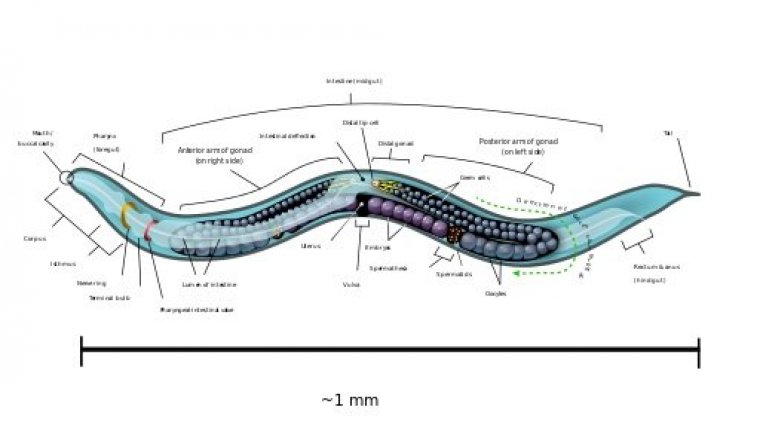| News / Science News |
Magnetic Field Sensor Unearthed in Worms
NIH | AUGUST 16, 2015
A team at the University of Texas at Austin has been using worms to study disorders related to the nervous system. They’ve also been examining the worms’ movement patterns to learn more about neuromuscular disorders, such as Parkinson’s disease.
The worms, known as Caenorhabditis elegans, are commonly used in research because they are easy to genetically manipulate. All their cells have been identified, and individual cells, including neurons, can be studied in living animals since they’re transparent.
The scientists placed worms in vertically oriented tubes filled with a gel-like substance. When light and electric fields were blocked, starved worms burrowed down, while well-fed worms migrated up.
They found that starved worms exposed to a magnetic field that was oriented opposite to the local Earth’s magnetic field reversed their burrowing behavior; they migrated up, suggesting they sensed magnetic fields.
The researchers examined worms obtained from 10 locations across the planet. They found that worms migrated at angles consistent with vertical movement in their native soil. This directional migration may help guide the worms to food sources.
To determine how worms sense magnetic fields, the scientists tested genetically altered worms. They found that those with deficiencies in pathways that sense touch, light, taste, and oxygen could still detect magnetic fields.
However, worms with a defect in a neuron pair called AFD couldn’t orient to magnetic fields. A specific type of protein in the AFD neurons, known as a TAX-4 cyclic nucleotide-gated ion channel, was required for magnetic orientation and vertical migration. AFD neurons also sense temperature, carbon dioxide, and moisture gradients.
YOU MAY ALSO LIKE





